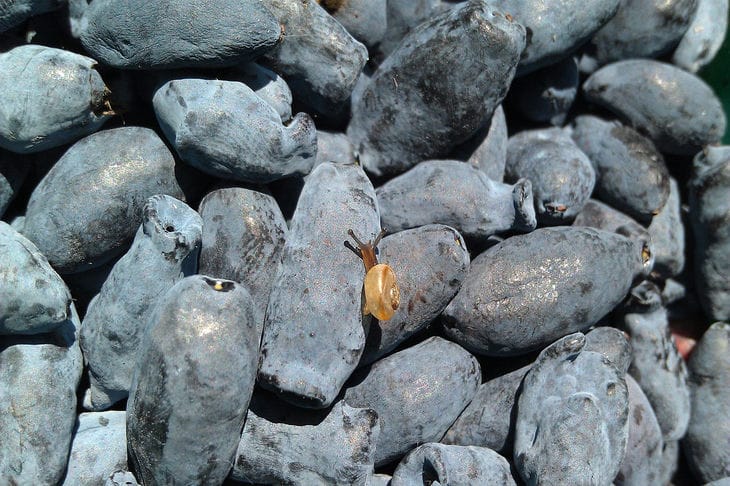Honeysuckle is one of the first berry crops that enchants us with its tasty and healthy fruits at the beginning of summer.
To achieve a bountiful harvest of sweet and juicy berries, it is important to provide the plant with proper care, including timely feeding during the ripening period of the fruits.
Nutrient requirements of honeysuckle
During the ripening period, honeysuckle needs an increased amount of potassium and phosphorus, says Anastasia Kovrizhnykh .

Potassium promotes the accumulation of sugars in berries, improves their taste and aroma, increases the shelf life and transportability of the harvest. Phosphorus is necessary for the development of the root system, flowering and fruit formation.
Deficiency of these elements can lead to reduced yields, deterioration of berry quality and weakening of the plant.
Potassium fertilizers for honeysuckle
To feed honeysuckle with potassium, you can use both mineral and organic fertilizers.
Among mineral fertilizers, the most popular are potassium sulfate, potassium magnesium sulfate and potassium nitrate.
They dissolve quickly in water and are easily absorbed by plants. Organic sources of potassium, such as wood ash and compost, are also effective and environmentally friendly.
Phosphorus fertilizers for honeysuckle
Superphosphate, double superphosphate and phosphate rock can be used as sources of phosphorus for feeding honeysuckle.
Superphosphate is the most accessible and effective phosphorus fertilizer, which quickly dissolves in water.
Double superphosphate contains more phosphorus and fewer impurities. Phosphate rock is a slow-release fertilizer that gradually releases phosphorus into the soil.
Timing and methods of feeding
The first feeding of honeysuckle during the period of fruit ripening is carried out in early June, using potassium fertilizers.
The second feeding is carried out after 2-3 weeks, using phosphorus fertilizers. Fertilizers can be applied both in dry form and in the form of a solution.
When applying dry fertilizers, they must be incorporated into the soil to a depth of 5-10 cm. When watering with a fertilizer solution, it is important to ensure that it does not get on the leaves and berries.
Microelements for honeysuckle
In addition to potassium and phosphorus, honeysuckle needs microelements such as boron, magnesium, iron and manganese. Boron promotes better fruit setting and increases their sugar content.
Magnesium is involved in the process of photosynthesis, increases plant resistance to stress. Iron is necessary for the formation of chlorophyll, prevents leaf chlorosis.
Manganese is involved in oxidation-reduction processes and increases plant immunity.
Complex fertilizers with microelements
To provide honeysuckle with all the necessary microelements, you can use complex mineral fertilizers with microelements. They contain all the necessary elements in optimal proportions and are easily absorbed by plants.
Foliar feeding
Foliar feeding is an effective way to quickly replenish nutrient deficiencies in plants.
The fertilizer solution is sprayed onto the leaves and stems of plants, allowing the nutrients to quickly penetrate the tissues.
Foliar feeding is especially effective during the fruit ripening period, when the plant needs increased amounts of potassium and phosphorus.
Organic fertilizers
Organic fertilizers are a safe and environmentally friendly way to improve soil fertility and provide plants with the necessary nutrients.
To feed honeysuckle, you can use an infusion of mullein, bird droppings, herbal infusion or compost tea.
These fertilizers contain not only macroelements, but also microelements, as well as organic substances that improve the structure of the soil and promote the development of beneficial microflora.
Proper care
In addition to fertilizing, it is important to provide honeysuckle with proper care, which includes regular watering, loosening the soil, mulching and pruning.
Regular watering is especially important during the ripening period of the fruit, when the plant experiences an increased need for moisture.
Loosening the soil improves its air permeability and promotes the development of the root system. Mulching helps retain moisture in the soil and prevent weed growth. Pruning promotes the formation of the bush and increases the yield.
Earlier we talked about how to fight late blight .









